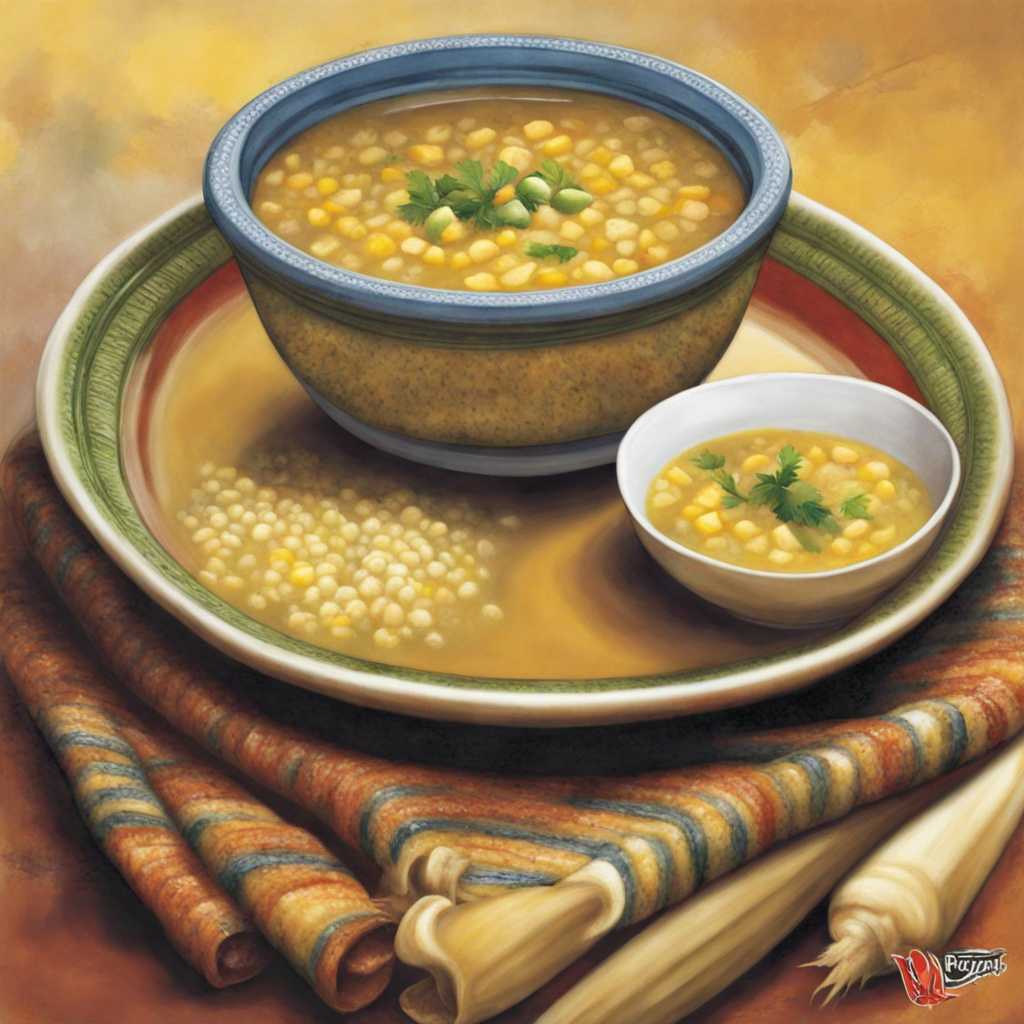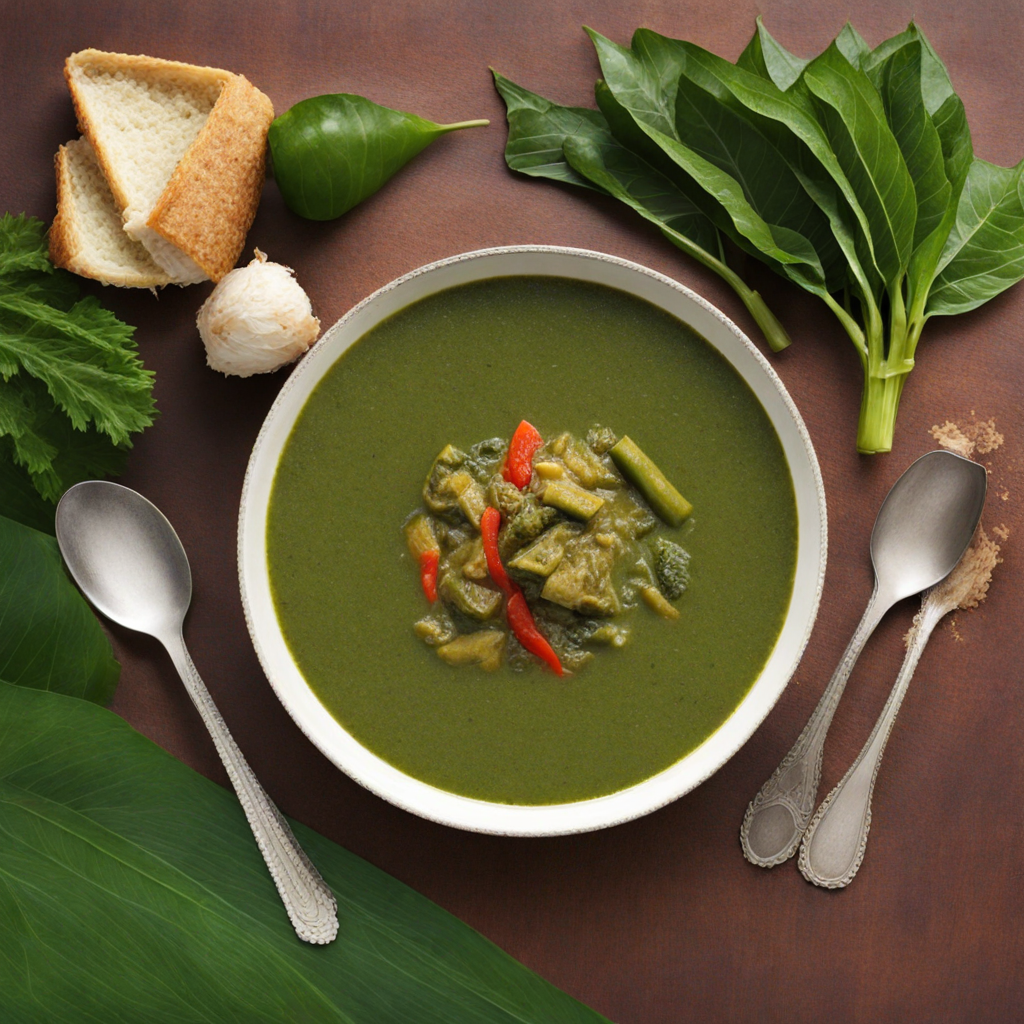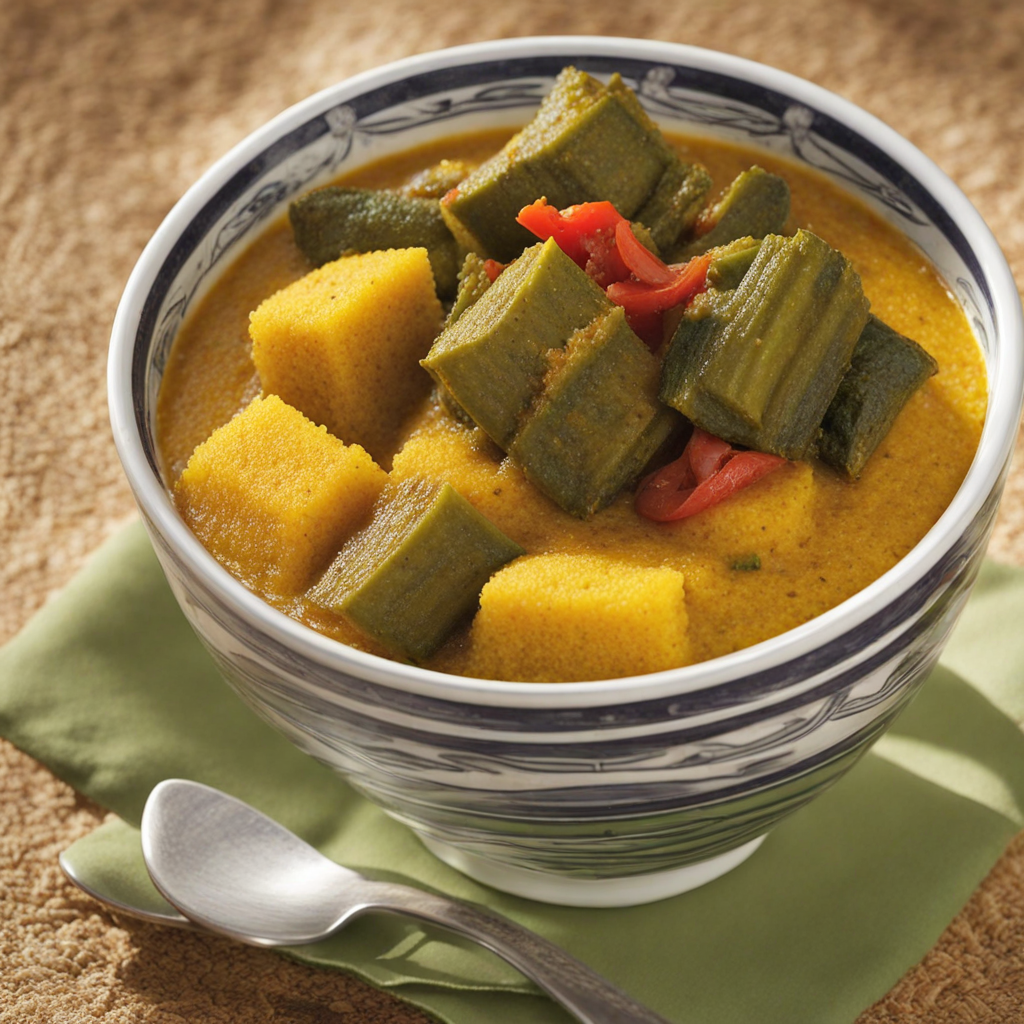Corn Soup
Corn Soup from Trinidad and Tobago is a delightful and comforting dish that embodies the vibrant flavors of Caribbean cuisine. This thick, creamy soup is primarily made from fresh corn, which is often harvested from local farms. The sweet, succulent kernels are simmered to perfection, releasing their natural sweetness into the broth. The soup is typically enriched with a variety of spices and herbs, such as thyme and scallions, adding layers of flavor that elevate the humble corn to a whole new level. In addition to corn, the soup often includes ingredients like potatoes, carrots, and sometimes even a hint of coconut milk, giving it a rich and creamy texture. Some recipes incorporate chunks of smoked meat or fish, which infuse the soup with a smoky depth that complements the sweetness of the corn. The balance between the savory and sweet elements makes this dish not only filling but also incredibly satisfying. Street vendors and local eateries often serve it piping hot, creating an inviting aroma that wafts through the air and beckons you to indulge. Corn Soup is not just a meal; it is a cultural experience that brings people together, often enjoyed at festivals and gatherings. The hearty nature of the soup makes it perfect for sharing, while the unique blend of spices reflects the diverse culinary influences of Trinidad and Tobago. Whether enjoyed as a starter or a main dish, this soup offers a comforting taste of the islands that is both familiar and exotic, making it an essential part of the Caribbean gastronomic experience.
How It Became This Dish
The History of Corn Soup in Trinidad and Tobago Corn soup, a beloved dish in Trinidad and Tobago, is more than just a warm, hearty meal; it is a culinary emblem that reflects the rich tapestry of the islands' history, culture, and agricultural practices. This soup, characterized by its sweet corn base and a medley of spices and vegetables, has become a staple street food, particularly during the rainy season and at festive occasions. To understand the significance of corn soup, one must explore its origins, cultural relevance, and evolution through time. #### Origins The origins of corn soup can be traced back to the indigenous peoples of the Caribbean, including the Arawaks and Caribs, who were among the first inhabitants of Trinidad and Tobago. These groups cultivated maize (corn) as a staple crop, utilizing it in various forms, including soups, porridge, and flatbreads. Corn was not only a vital food source but also held social and spiritual significance in their cultures. With the arrival of European colonizers in the late 15th century, the culinary landscape of the islands began to transform. The Spanish, French, and later the British brought with them their own cooking traditions and ingredients. However, despite these influences, the indigenous practices of utilizing corn remained integral to the local cuisine. Over time, the fusion of indigenous, African, and European flavors led to the development of unique dishes reflective of Trinidad and Tobago's multicultural society. #### Cultural Significance Corn soup is emblematic of the islands' cultural diversity, encapsulating the influences of various ethnic groups that have settled in Trinidad and Tobago over the centuries. The dish gained prominence in the culinary repertoire of the Afro-Trinidadian community, where it is often associated with social gatherings, festivals, and family traditions. In Trinidad, corn soup is often enjoyed during the annual Carnival celebrations, where street vendors serve it to revelers seeking comfort food amidst the festivities. The soup is typically sold from makeshift stalls, where the aroma of simmering corn, spices, and vegetables wafts through the air, inviting people to indulge. This connection to Carnival underscores the communal aspect of food in Trinidad and Tobago, as families and friends gather to celebrate life, culture, and heritage. Moreover, corn soup has become a symbol of resilience and resourcefulness. During times of economic hardship, it serves as an accessible and nutritious meal that can be prepared with limited ingredients. Its simplicity and adaptability make it an ideal dish for families, allowing cooks to incorporate whatever vegetables or proteins may be available. #### Development Over Time As Trinidad and Tobago evolved, so too did the recipe and preparation of corn soup. Traditional versions typically include fresh corn, often scraped from the cob, simmered with a blend of spices, herbs, and vegetables, such as carrots, celery, and bell peppers. The addition of ingredients like coconut milk, hot pepper, and even meats like chicken or smoked herring has created variations that cater to different palates and dietary preferences. In the late 20th and early 21st centuries, the globalization of food culture began to influence the way traditional dishes were perceived and prepared. Corn soup, while still rooted in its original flavors, began to see innovative interpretations. Chefs and home cooks alike started experimenting with gourmet versions, incorporating international ingredients and techniques. This creative evolution has allowed corn soup to maintain its relevance in a rapidly changing culinary landscape. Additionally, the rise of health-conscious eating has prompted many to revisit traditional recipes with a focus on nutrition. Corn soup's base of corn and vegetables makes it a nutrient-rich option, and the use of fresh, local ingredients aligns with the growing farm-to-table movement. The emphasis on sustainability and local sourcing has renewed interest in traditional dishes like corn soup, as people seek to connect with their heritage through food. #### Today’s Corn Soup Today, corn soup remains a cherished dish in Trinidad and Tobago, transcending generations and cultural boundaries. It is commonly featured in local restaurants, food festivals, and home kitchens alike. The soup embodies the spirit of Trinidad and Tobago—vibrant, diverse, and full of flavor. Street vendors continue to play a crucial role in its dissemination, with stalls lining the streets, particularly during the rainy season when the warm, comforting soup is most appealing. The communal experience of enjoying corn soup from a vendor or at a family gathering fosters a sense of belonging and connection among people. Furthermore, corn soup has gained recognition beyond the borders of Trinidad and Tobago. As Caribbean cuisine becomes more popular globally, dishes like corn soup are finding their way into the hearts and kitchens of food lovers around the world. Cookbooks, culinary shows, and social media have contributed to the increasing visibility of this delicious dish, allowing others to experience the warmth and richness of Trinidadian culture through its food. #### Conclusion Corn soup, with its deep roots in the history and culture of Trinidad and Tobago, stands as a testament to the island's ability to adapt and thrive through diverse influences. From its indigenous beginnings to its status as a modern culinary staple, the soup reflects the resilience, creativity, and communal spirit of the people. As it continues to evolve and inspire, corn soup remains a beloved dish that nourishes both body and soul, making it an enduring symbol of Trinidad and Tobago's vibrant culinary heritage.
You may like
Discover local flavors from Trinidad And Tobago







